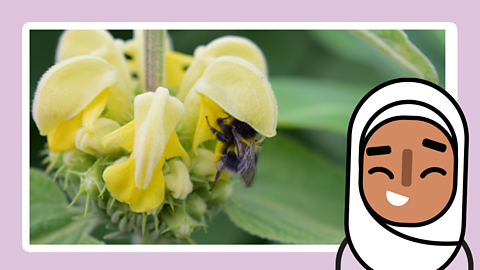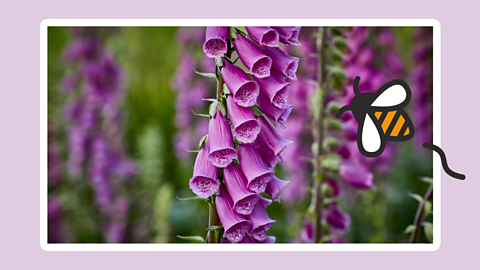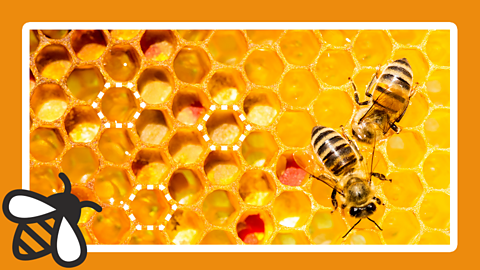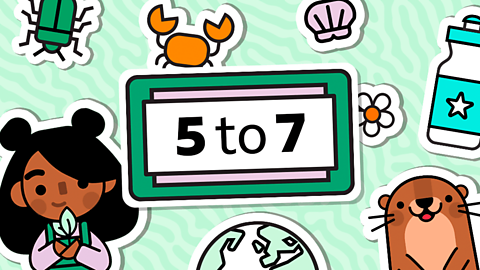
Welcome to The Regenerators.
Created in partnership with the .
Introduction
Pollinators are insects that visit the flowers we grow.
They drink the nectar from the flowers and when they do, they get sticky pollen grains on their body which they take from flower to flower.
Pollinators are busy in the daytime, but did you know there are many that are busy at night too.
Why do we need pollinators?
We can grow many different types of plants in our gardens to help keep pollinators interested in visiting.

Plants need these pollinators to keep making new plants. This is called reproduction.
We also rely on pollinators to survive because most of the plants we grow for food need to be pollinated.
Find out more about the important job that bees play in pollination with this video.
Different types of pollinators

Bees and butterflies are common pollinators, but there are many more, such as:
- flies
- beetles
- wasps
- moths
In some parts of the world birds and bats also move pollen from flower to flower!

Daytime pollinators
Here are some pollinators you can find in the daytime.

Night-time pollinators
Here are some pollinators you can find at night.

Colour and shape
Bees are attracted to blue and yellow coloured flowers. They donãt have a great sense of smell so they will be most likely to be found on flowers that smell like sweet honey.
Bees and butterflies are particularly drawn towards Buddleia and it is often called the ãbutterfly bushã.
Some flowers have petals in a special shape to make coming in to land easy for their pollinators.
Find out how flowers use colour and shape to attract pollinators below.

Image caption, Foxglove flower
Plants hide their sweet nectar deep in the flower so that a pollinator must crawl through an obstacle course to find it.
Image caption, Broom flowers
The parts with the pollen whizz round the visiting pollinator covering them with yellow dust.
Image caption, Pansies
Pansies have coloured guidelines to help the pollinators land.
Image caption, Geraniums
Geraniums have guidelines to help the pollinators land on the flower.
Image caption, Sunflowers
These flowers have a big landing pad.
1 of 5
In the night garden

Night-blooming plants smell strongest at night. They use their strong scent to guide in pollinators when it is dark.
Bees do not have a good sense of smell and in the UK they do not fly at night.
Some moths only come out at night and they really like nice smells. They have no nose but can smell and taste through their feet.
Moths rely on their sense of smell to find the right plants for their food. They love the sweet, tasty treat of nectar that smells good at night.
Night-time flowering plants are often white or pale coloured. This makes them easier to see at dusk when the daylight has nearly gone.

Go on a moth hunt
Can you identify all 16 moths listed on the moth spotter guide?
Go grab a torch and take a copy of the moth spotter guide outside to track down some night-time pollinators.
Do they land on flowers similar to the ones on the night-time pollinators image above?
GREEN CLASSROOM

There's more to learn
Explore more lessons and content from around the ôÕÑ¿å¥éá.
How has my local area changed?
GREEN CLASSROOM

Finding shapes in nature
GREEN CLASSROOM

Year 1 - 2 and P2 - P3
GREEN CLASSROOM

More from The Regenerators
ôÕÑ¿å¥éá BITESIZE
